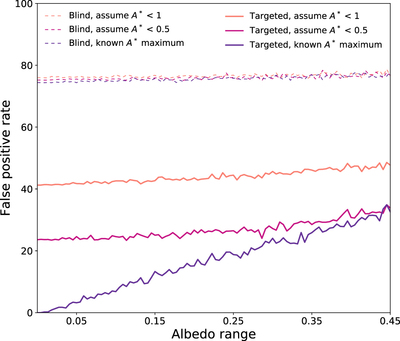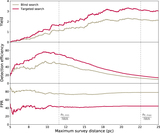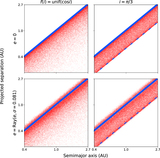Image Details

Caption: Figure 5.
Effect of albedo distribution—and our knowledge thereof—on the false-positive rate, or, the odds of an Earth twin candidate being a un-Earth. The x-axis is the range within which albedo is allowed to randomly vary in the model: the greatest range corresponds to A* ∈ [0.05, 0.5], and the smallest range to A* = 0.3. Dashed lines represent searches for planets at random phase, while solid lines represent targeted searches. Colors show different assumed maximum albedos (e.g., the value of A* in Equation (15)). Noise in this figure is due to model Poisson noise: because A* is generated anew for each planet per albedo range increment, sometimes planets will be assigned new A* values sufficiently low to diminish their planet/star contrasts below the instrument floor, which renders them undetectable. The false-positive rate in a blind search is insensitive to the underlying albedo distribution, or our knowledge thereof (dashed lines). Targeted searches still have false-positive rates of at least one in two, unless all planets have the same albedo (albedo range of 0) and we know that universal albedo a priori (solid purple line).
Copyright and Terms & Conditions
© 2018. The American Astronomical Society. All rights reserved.









